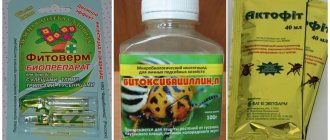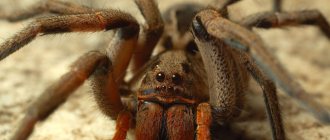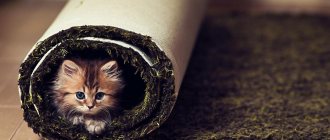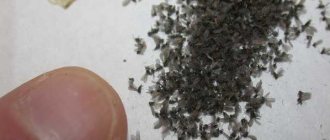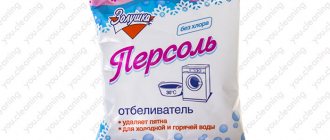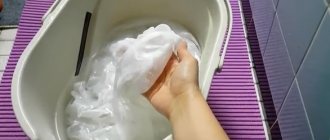About hacienda » Tips
Adviсe
Flies live where there is food, especially in the open or with a large accumulation of waste that smells “pleasant” to them. Therefore, it is extremely important that there are no places on the site that are attractive to these insects, since it will not be possible to get rid of flies in the country under such conditions. But with the onset of cold weather, they begin to flock to the warmth, and it becomes much more difficult to get rid of uninvited guests. In cases where it is not possible to eliminate the object that attracts flies, various methods of combating them are used, including mechanical, physical and chemical effects, as well as repellent devices and natural remedies.
Related article:
We simplify harvesting in the garden: 6 types of devices for collecting fruits from trees
What is the danger of flies
It may seem that flies are harmless creatures that only bother you with their annoying presence and fly aimlessly. But in fact, such insects can carry various parasitic and infectious diseases on their paws and wings:
- the occurrence of worms in the body;
- cholera;
- jaundice;
- typhus;
- polio;
- tuberculosis;
- diphtheria;
- and others.
Some varieties of these insects can infect humans with eye diseases (trachoma, conjunctivitis). You can accidentally eat the eggs that flies lay as food, and as a result, develop miasma in the intestines. If a fly is found on food cleaning its legs, then such food should no longer be eaten.
Main symptoms:
- various intestinal disorders;
- body temperature often increases;
- skin itching;
- increased liver volume;
- drop in blood pressure.
- and other.
If you do not treat diseases, your health can significantly deteriorate, even leading to death.
Aerosols and sprays
A quick and simple product that is convenient to use to kill flies. No preparation or complex manipulations are required to process the room.
Aerosol Dr. Klaus
A powerful jet is able to penetrate into secluded places in the room and quickly destroy all domestic parasites. Spray the room for a few 10-15 seconds and leave the room for 30 minutes. Pre-close windows and doors to stop air from entering. 15-30 minutes after treatment, ventilate the room for half an hour.
Probably, each of us has at least once encountered the appearance of flies or midges in the house. Where these insects come from is sometimes not clear, but they are annoying with their annoying buzzing and sometimes bites from early spring until late autumn.
Let's take a closer look at how dangerous flies are and how to remove them at home.
So, let's start with a description of some varieties of these insects. As they say, you need to know the enemy by sight. But seriously, some knowledge of their lifestyle and methods of reproduction will help you understand how to deal with flies.
Danger
As we have already said, blood-sucking subspecies of flies can be carriers of dangerous and sometimes fatal diseases, such as tularemia
or
anthrax
.
_ Why are the others dangerous? Everything is explained by the lifestyle and habitat of most of them. They live in rotting waste or excrement, where they create their nests with many larvae, and therefore carry on their paws a huge number of microorganisms that are most harmful to humans and domestic animals
. So there are good reasons to destroy them.
Blood-sucking fly
Life cycle and reproduction
Of course, their life cycle depends on many factors, but the average lifespan of each individual is about a month. During this time, she is able to produce about 3 thousand eggs. The eggs are so small that they are practically invisible to humans. After about a day, the eggs will hatch into larvae and will grow for a week before pupating. They will also spend about a week in the pupal stage. Thus, about two weeks pass from the laying of an egg to the emergence of an adult, which means they reproduce quite quickly. Therefore, it is necessary to take measures to destroy them as soon as possible.
Fighting flies
Chemical preparations available on the market show good results in killing fruit flies, house flies and carrion (green) flies. Many people are wary of using chemicals indoors, especially in the kitchen. For them, there are methods proven over centuries to get rid of flies using folk remedies:
- homemade sticky traps;
- solutions;
- saccharin;
- black pepper;
- vinegar;
- kerosene;
- repellent plants;
- homemade insecticides.
Sticky tapes are an old and tried-and-true fly trap. The animal's paws stick tightly to the adhesive tape. It has gained popularity due to its comparative cheapness and good results. This method is not suitable for everyone, because the sight of a long ribbon covered in large green flies scares many people away.
The most pleasant way to forget about flies in your rooms is to plant flowering plants under the windows in the yard that repel not only flies, but also many other insects. And the eye is happy, and flies do not fly into the room.
Mechanical methods
A traditional old fly swatter does the job perfectly if there are only a few flies in your dacha. The process of killing flies may take several hours, and besides, you will not kill all the flies at once. But the method is completely free and extremely simple, so you should definitely use it.
Chemistry
It must be remembered that many drugs are dangerous to humans and they must be used with a protective mask, and after use, leave the room until it is ventilated. None of the products destroys insects 100%, so you need to use several control methods at once and repeat the planned destruction several times.
- Aerosols. The most famous insect repellents. It is better to purchase specific aerosols aimed specifically against flies. This way you will not destroy beneficial insects in your dacha. In addition, such means are usually more harmless to humans. To kill flies, you need to spray the product indoors and in secluded corners in the garden.
Any insecticide in an aerosol is poison, so carefully follow the instructions and safety precautions.
- Biological products. These powdered products contain live bacteria that destroy organic compounds. Cesspools, ditches and other similar places are cleaned with such preparations. The products are relatively harmless and, if the instructions are followed, do not pose a danger to animals and plants.
- Chlorine. Cesspools are also cleaned with this product, but unlike biological preparations, chlorine is toxic to all animals and plants. Its only advantage is its lower price. This drug can completely poison the soil, as a result the plants may die and the water in the well will become poisonous. Not recommended for use.
Plants that do not tolerate flies:
- Fumigators. These are plates that, when heated or ignited, emit a gas that is poisonous to flies, but harmless to humans. Vaportrin is usually used in fumigators; they do not act immediately, but after 20-30 minutes. The product gives maximum results after 2-3 hours. Fumigators operate on mains power, so they cannot be used in all rooms. High-quality plates for them are expensive, but they give a guaranteed result.
Folk remedies
There are many folk recipes. Some use plants and their scents, others repel but do not kill flies, and others are homemade traps.
- The simplest, but not the cheapest way is to spray alcohol or vodka using a spray bottle. Flies cannot tolerate alcohol vapors in the air and will quickly clean the room. In addition to the relatively high price, the method has two more disadvantages - spraying alcohol will only repel flies and the repellent effect will go away as soon as the room is ventilated.
- The method is similar to the previous one, only it is not alcohol that is poured into the spray bottle, but diluted essential oil of clove, mint or lavender. Essential oil should be diluted in water in the amount of 5 ml of oil per 500 ml of water. You need to use it carefully, as allergic reactions may occur.
Crops that repel various insect pests:
- Live traps - sundew plants, Venus flytrap and others. These flowers are living predators. Plants usually extract nutrients from the soil, but these flowers get them by hunting insects. The fly becomes trapped in the plant, where it is digested using a solution similar to gastric juice. But we must remember that some plants emit unpleasant odors to attract insects.
- To repel insects, you can grow flowers and plants in your dacha that flies do not like. Such plants include geranium, basil, lavender, bay leaf and others. Most of them can be grown both in pots and in a flower bed. You can also make repellent tinctures from these plants or use dry leaves.
Please note that some products repel insects, while others lure and kill them in a trap. These are opposite methods of action, so they cannot be used together.
Fly traps
Special “traps” will help get rid of only isolated individuals. Of course, if you use them en masse, they will clean areas no worse than professional chemical disinfestation.
- The cheapest and most scalable method is duct tape. The principle of operation is simple - the insect sits on the tape and sticks, after which it can be killed or it itself will die of starvation. The method has two significant disadvantages. Firstly, the tapes dry out quickly, so they must be constantly changed. Secondly, not all flies land on such a trap, so the method does not give 100% results.
- Since flies love sweets, you can make a trap with saccharin. Saccharin is a sugar substitute for diabetics, but for some reason it is fatal to flies. To prepare poison, you need to take honey, jam or other sweet substance and dissolve as much saccharin as possible in it. It is necessary to dissolve it in jam because saccharin does not emit an aroma and therefore does not attract insects. The resulting product should be moistened with a napkin or paper and left in the air.
Plastic insect trap:
- Bottle trap. The easiest trap to make by hand. Take a plastic bottle, which is cut closer to the neck. The cut part is turned over and inserted into the bottle. Dilute jam, syrup or beer is poured into the trap. Flies that get inside will not be able to get out because of the narrow funnel. An option for such a trap is a half-liter jar and a paper funnel with a cut hole.
- Homemade trap with poison. To do this, pour a solution into a saucer consisting of half a teaspoon of formaldehyde, 3 tablespoons of milk, 5 teaspoons of soda. A piece of bread is placed in the center of the solution. The bread is soaked in the solution, and the flies that sit on it quickly die from poisoning.
- Electrical traps. They are a UV lamp in a grid; the device itself operates from the network. UV rays lure the fly inside the device, where it dies from a discharge of electric current or, unable to get out of the cage, dies of hunger within a day. The mesh protects the lamp from accidents, and animals and children from electric shock. A significant disadvantage of the device is its high cost.
PARTNER NEWS
Effective folk remedies and methods of their preparation
Folk remedies allow you to make fly traps with your own hands at home. Often, recipes use ingredients that are available to everyone. So how to get rid of flies on the street in the yard using folk remedies? Options to consider:
Homemade tape
The two main advantages of this method are low cost and efficiency. But there are also disadvantages. A trap that is blackened by attached insects does not look very attractive, especially if it is located in the kitchen or in a gazebo where the family often eats. To make traps you will need castor oil, rosin and molasses (can be replaced with honey). As strips you can use fabric strips, cardboard strips, cut up unnecessary wallpaper.
Heat 2 tbsp. l. castor oil and add 1 tbsp to it. l. rosin. Pour the resulting mixture into a container with 100 g of molasses or liquid honey. Use a brush to coat the parchment or fabric strips with the sticky sweet solution. If you don't have honey or molasses, you can use craft glue. Future baits must first be treated with glue and then lubricated with a solution of rosin and castor oil.
Beer trap
Flies love a variety of drinks. A can of beer will quickly capture the attention of insects. An open container with an intoxicating drink should be placed in a room suffering from flies, and wait until the buzzing dipterans themselves fly to the prey and begin to be processed. The insects will almost instantly become interested in the trick and will get inside the bottle, from where they will not be able to get out on their own. Such a simple trap will help you get rid of annoying sounds in the shortest possible time and return peace and tranquility to your home.
Preparation of the solution
To prepare the mixture you need:
- milk;
- sweet water;
- formalin;
- slice of bread.
Formaldehyde, milk and sugared water are mixed in a ratio of 1:3:5. The poisoned solution is poured into saucers or other containers and placed around the house in places where flies enter the room.
These could be door thresholds, window sills. Place bread crumbs in saucers. A piece of bread soaked in the solution attracts flies. After feasting on the poison, they die literally within 2 minutes.
On hot days, the milk will quickly sour, after which the bait will become ineffective. Make sure that saucers are placed out of the reach of small children and pets. This solution is also very dangerous for cats and dogs.
Saccharin
Saccharin, a substitute for sugar, is considered a real poison for flies. The bait is prepared as follows: for one glass of water we take 2 g of saccharin and 20 g of honey. You need to soak a newspaper or other paper sheet with the resulting sweet water. After drying, place the dry sheets on the window sills. A fly that lands on such a leaf will die within a day. It is better to hide newspapers from pets.
Kerosene
To scare off flies indoors, you need to wash the floors with water with the addition of a flammable substance. For 1 bucket of water, 40 ml of kerosene is enough. For a while (about 2 hours) you can forget about insects in the room. Such “cleaning” will leave a sharp, unpleasant smell of kerosene in the room. This method works quickly, but its duration is very short.
Home control methods
Use natural weapons to fight flies. Among the most popular “folk” methods:
- Geraniums in pots and ornamental tomatoes can become a natural barrier to insects. By releasing aromatic substances that are unpleasant to pests, they are an excellent natural replacement for fumigators.
- Saccharin, unlike sugar, is a deadly poison for flying parasites. It is enough to prepare a syrup from a mixture of water, honey and saccharin and pour it into containers. Uninvited guests, attracted by the sweet aroma, will taste the poison and die.
- Essential oils are not among insects' favorite foods. Try offering flies a cocktail of eucalyptus, lemon, lavender, geranium oils - they can be placed in an aroma lamp or used in the form of sticks for smoking incense.
- Sticky tapes based on castor oil and rosin, flavored with honey, help fight harmful parasites quite effectively. However, their production requires time and consumables.
- You can also use regular sugar as a sweet death trap for flies - just flavor it with a fair amount of black pepper or chlorophos.
However, you don’t have to stop at the proposed methods of struggle, because the list of folk remedies is truly inexhaustible.
Indoor plants against flies in the house
Above we looked at all sorts of variations on how to get rid of flies in the house very quickly. Now here is a list of plants that literally eat insects. By planting them in pots on the windowsills, you will decorate the window and forget about flies forever.
No. 1. Geranium
It looks quite beautiful, the smell seems attractive to humans, but insects cannot stand it.
No. 2. Venus flytrap
The name came about for a reason. The flower traps flies with its leaves, after which they cannot get out. This is how the plant feeds.
No. 3. Wormwood, lavender, basil, tansy
The presented varieties act as repellers. Flies don't like them, so they try to stay away.
No. 4. Cherry
There is no need to set up a vegetable garden in your apartment. Just grow 1-2 pots of Cherry tomatoes on your windowsills.
No. 5. Elderberry, fern
Today it is not difficult to obtain branches of the presented plants. Place them around your home in fresh form (dried ones cannot be used, they have the opposite effect).
No. 6. Eucalyptus, myrtle
Refresh and disinfect the room in which they are installed. They enrich the air with nutrients and repel flies.
Methods of control on the site
Flies that besiege plants are called flower flies: iris flies, beet flies, cherry flies, onion flies - these pests have quite romantic names. They look almost like ordinary houseflies, only their bodies are more graceful. You can recognize this insect by its dark gray body with yellowish spots. The flower larvae that hatch from the egg eat the plant and it rots.
An insecticide helps to remove such flies from the garden; this will be the most effective method. You can save yourself from misfortune with the help of the drugs “Aktara”, “Aktelik”, “Decis” and their analogues. To save the plant, you need to act as early as possible, before the pest destroys the flower or other crop. To prevent the appearance of flies, you need to sprinkle the beds with wood ash. And the larvae overwintering in the soil will be destroyed by the solar solution.
You can also plant plants in the garden that repel flies: elderberry, basil, rosemary, rowan, mint, lavender, juniper, tansy, woodruff. Tomato tops will also be negative for flies on the site; if you spread them around the perimeter, this will reduce aggression from insects. By the way, such modest flowers as marigolds also do an excellent job.
Plastic bottle traps are also a country way to control flies. By hanging them on trees, you can save beautiful flowers and other plants from damage by insect larvae. The main thing is to pour attracting liquid into the homemade installation. Even fruit pulp from overripe apples or berries will do. Someone pours Coca-Cola into the trap and assures that flies fly into the homemade device in “shoals.”
Such a trap can also be hung in a gazebo so that flies do not reach there during the daytime rest. But bunches of aromatic herbs high on the walls of the gazebo, under the ceiling, will not be superfluous. And in the evening it will be especially pleasant to drink tea in such a place. Hanging herbs is easier than spraying them with something “chemical” or using an aerosol, and it’s harmless.
Chemicals
Chemical agents are used when there are too many flying synanthropes and physical or folk methods do not work. The effectiveness is higher compared to traditional recipes, but the drugs can be unsafe for humans and animals, therefore, when using insecticides, you need to use personal protective equipment - gloves, a mask, a suit. During processing, it is necessary to exclude people and animals from being in the room. After treatment, the rooms must be thoroughly ventilated.
- Minap 22. Active ingredient – chlorpyrifos (9.3%). It is a concentrated white suspension. Once in the insect's body, it disrupts the functioning of the nervous system, which leads to muscle cramps and paralysis, as a result of which the parasite dies. It is effective not only against flies, but also against cockroaches, bedbugs, ticks, ants and other pests.
- Master 250. Active ingredient – chlorpyrifos (25%). It is an analogue of the highly effective drug Empire 20 (discontinued). Used against a wide range of different parasites. Spray on surfaces. The greatest insecticidal effect is achieved precisely when the insect comes into contact with the preparation on the surface. Low toxicity for people, animals and birds. The effect lasts for 6 months.
- Get. Active ingredient: chlorpyrifos (5%). A very popular product among consumers. It is a cream-colored liquid concentrate with a faint orange scent. An aqueous solution is prepared and sprayed on the surface. Adult individuals, upon contact with the surface, attach microcapsules with poison to their paws, it penetrates their body, disrupts the functioning of the nervous system, which is why the individuals die. The effect does not appear immediately, but within 14 days, and lasts up to six months.
Folk recipes
Folk remedies are mainly used as preventive measures. Natural preparations are absolutely harmless to people and barn inhabitants. They have a repellent effect on flies due to their pungent aroma. Bouquets of wormwood, mint, tansy, garlic, lemongrass, as well as other plants and fragrant herbs are placed near windows, doors and other places inaccessible to animals and birds.
Regular ventilation of outbuildings and drafts in the warm season do not contribute to the long stay of flies in them.
You can treat a cow at home or another animal against annoying pests with a solution that contains one of the essential oils of such strong-smelling plants as lavender, peppermint, laurel, thyme, and citrus fruits. The product effectively protects livestock for 2 hours. There are many different recommendations in the “piggy bank” of folk recipes to protect animals from flies. For processing livestock use:
- tar-based aqueous and oil solutions;
- diesel fuel;
- a mixture of vegetable oil and shampoo in a ratio of 2:1;
- aqueous solution of ASD 3 fractions.
Traditional recipes for flies
To prevent flies from landing on cows and other barn inhabitants, any safe means are good. Their choice depends on the preferences of the owners of livestock, as well as the effectiveness of the technique.
Powders and tablets
The tools are very convenient to use. They are highly effective. They are a pressed insecticide with flavoring additives and aromas to attract insects. Placed in places where pests accumulate. Used in the office, house, apartment, country house. The residual effect lasts from 4 to 8 hours. Dilution with water with added sugar and jam is provided.
Advantages:
- convenient use;
- long action;
- affordable price - from 50 rubles;
- Possibility of use in premises for various purposes.
Flaws:
- acts only when ingested;
- small impact area.
Common preparations in the form of powder and tablets are Agita, Byte, Bros, Trianon, Global, Agromaxi.
Drosophila in the apartment, how to get rid of it
Drosophila are small dipterous fruit flies. They multiply very quickly on fruits and vegetables. From the school biology course we remember that it was fruit flies that helped Dr. Mendel discover the laws of heredity. But in everyday life they are unpleasant to us, and we want to get rid of them.
First, carefully check if there are any spoiled fruits or vegetables lying around and remove them. Secondly, fruit flies do not like the smell of garlic. Crush a clove of garlic with a press and place it in an area where fruit flies are gathering. In a quarter of an hour there will be no trace left of the flies.
Carnation. This beloved spice is not only to the taste of flies. Place a few spice cloves on the shelves of your kitchen cabinet and rest assured: no bugs will get into your cereals.
Aquafumigator for home
A modern fly repellent based on a unique insecticide with a wide spectrum of action. May be used at home if instructions are strictly followed. The only aquafumigator on the modern product market is Raptor.
The device consists of several parts - a container for pouring liquid, a jar with holes containing the active component. To start the action, you need to install the main part of the aquafumiator in a container with water. A chemical reaction immediately begins, resulting in smoke and tiny droplets of water being released into the room.
On a note!
The main advantage is that it is many times more effective than conventional aerosols; it penetrates into the deepest crevices and soft tissues. Destroys pests at any stage of development. Does not require human presence and is not a fire hazard. It begins to act from the moment the smoke is released. The maximum effect is observed in the first 4 hours, the residual effect is prolonged for 20-30 days.
The disadvantages are that you need to hide things, food, dishes, wash the floor after disinfestation is completed, wipe down the furniture, and thoroughly ventilate. The price of the Raptor aquafumigator is about 600 rubles, the processing area is up to 30 sq. m.
Review
They poisoned us on the loggia. It was possible to exterminate the colony of insects in a couple of hours; no re-invasion was observed for about a month. Disposal with an aquafumigator is convenient, effective, simple.
Irina, Moscow
Mosquito trap made from improvised means
You will need:
yeast – 1 gram;
- hot water – 1 glass (200 ml);
- sugar – 50 grams;
- plastic bottle.
How to make a trap?
- Cut the plastic bottle into 2 parts (the top one should be slightly smaller).
- Pour water into the bottom part and add sugar.
- Add yeast to the sweet mixture.
- Place the top of the bottle, neck down, into the bottom (make sure the neck does not touch the water!).
- Wrap the trap in thick paper or cardboard.
The yeast will begin to ferment, and as a result of the fermentation reaction, carbon dioxide will be released (simulates human breathing). And the total heat emanating from hot water will recreate the temperature of the human body. Mosquitoes will fly to carbon dioxide and heat, find themselves in a trap, and will not be able to get out of it.
Preventive measures
To prevent the appearance of pests, it is important to carry out preventive measures. Excellent conditions for the reproduction and residence of pests - heat, humidity, and the presence of organic waste. Therefore, the following rules must be observed:
- Keep the house, sheds and yard clean. Remove dirt in a timely manner, throw out garbage (preferably once every 1-2 days), do not leave dirty dishes with food residues, regularly ventilate the room.
- Take care of pets and birds. Remove droppings from them, clean their habitats, and wash the animal if necessary.
- Keep the area clean - cover trash containers, mow the lawn on time, remove old grass and fallen leaves, remove dog droppings, fill cesspools with bleach or any other septic tank.
- Monitor the condition of ponds on the site. Standing water creates favorable conditions for various insects, so you need to make sure that it does not rot and silt does not form.
- Properly store the harvest. The putrid smell of spoiling vegetables and fruits attracts flies, this is a real feast for them!
- Install mosquito nets. Now mosquito nets are made to any size. It is advisable to install them on windows, vents, doors, ventilation holes.
We answered in detail the question - how to deal with flies in a summer cottage. Once you start the fight, it is best to take an integrated approach - use chemicals, folk remedies, and various traps.
Sources
- https://9dach.ru/nasekomymie/esli-nadoeli-muhi-vo-dvore-prostye-i-effektivnye-sposoby-borby
- https://med-post.ru/prochee/kak-bystro-izbavitsya-muh-narodnymi-sredstvami
- https://kliningovyj-raj.ru/tehnika-i-sredstva/kak-izbavitsa-ot-muh-na-ulice-vo-dvore-narodnymi-sredstvami/
- https://apest.ru/muhi/kak-izbavitsya-ot-muh/kak-izbavitsya-ot-muh/
- https://more-vsego.net/kak-izbavitsja-ot-muh-v-dome-24-luchshih-sposoba.html
- https://bezbukashek.ru/muhi/kak-izbavitsja-ot-muh-na-dachnom-uchastke-podruchnymi-sredstvami
A little about flies
The danger of flies is that they fly through garbage dumps, land on feces and other “unpleasant” surfaces. A fly moving from excrement to food will not make food tastier. Dirt, germs and worm eggs cling to the flies' furry legs. They fly very nimbly and quickly. Anyone who has tried to swat a fly knows that you can’t do without a fly swatter, as they instantly react to the slightest movement.
Flies feed exclusively on liquid food; their mouth organ has the shape of a “proboscis”, with which they lick liquid and soft pieces of food. At the dacha they are attracted to juices, compotes, honey and jam. The main danger of infesting a summer house with flies is that they are the main carrier of some helminths and pathogenic bacteria. Among the list of microbes there are pathogens of typhus, dysentery and cholera - the most dangerous diseases even for the 21st century.
An adult lays up to 150 eggs at a time in a humid environment. Fly eggs can be found in cesspools, manure, damp soil, and other damp and unsightly places. The larvae emerge from the eggs quite quickly - after 8-12 hours. The larva does not have a distinguishable head or legs; it looks more like a short white worm. The size of the fly larva is small - 1-2 mm.
After 1-2 weeks, the larvae turn into pupae, and a month later an adult emerges from the pupa. Flies do not live long - 1-1.5 months, during which time each individual lays 1-2 thousand eggs. Under favorable conditions, the number of flies in an area can increase hundreds of times in one season. Therefore, you need to start fighting them when they first appear.
Plants that repel insects
Flies are hypersensitive to strong odors. Therefore, to protect the yard, you can use some types of plants, for example, planting a walnut on the site or decorating a recreation area with a flowerbed of marigolds. The following will also help repel insects:
The smell of these plants not only gets rid of flies - lavender flower beds or beds with mint and basil repel mosquitoes, ants, bedbugs and ticks.
Containers with chopped fresh tomato leaves and pots of geraniums are placed on the veranda or gazebo, and bundles of dried herbs are hung around the perimeter.
